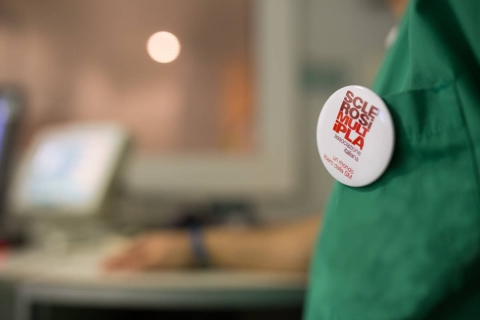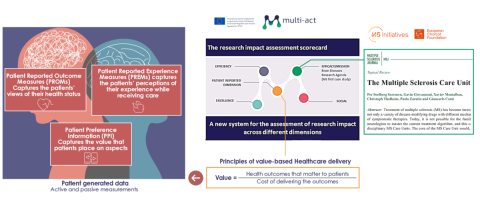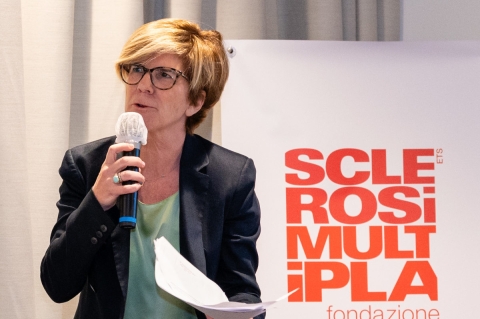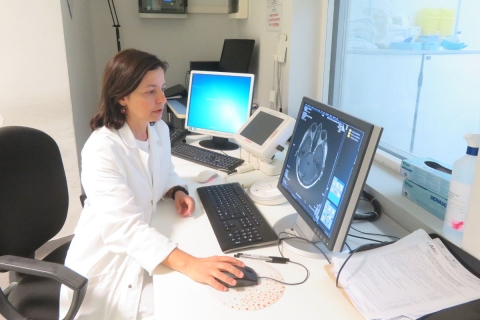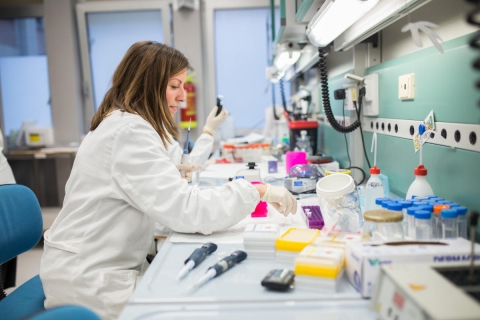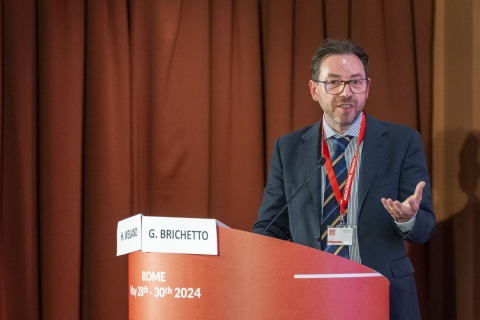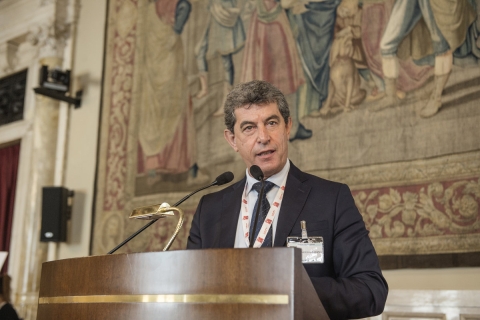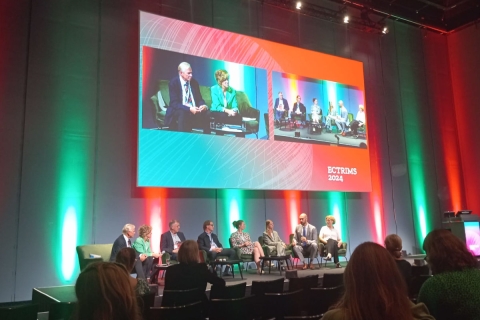After Dr. Del Sette and Dr. Giovanni Malferrari, we met one of the top international experts in cerebral venous haemodynamics. He will interpret the sonological examinations under way for the multicentric study carried out by the Italian Society on MS and CCSVI
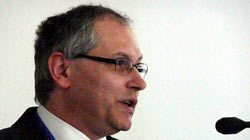 After Dr. Del Sette and Dr. Giovanni Malferrari, we met Professor Erwin Stolz, the third central expert who will interpret the sonological examinations under way for the multicentric study carried out by AISM-FISM on MS and CCSVI. Erwin Stolz, from the Department of Neurology of the Giessen University in Germany, is one of the top international experts in cerebral venous haemodynamics. We can deepen with him how the activity carried out by AISM can be shared and evaluated in the international framework of experts on venous haemodynamics.
After Dr. Del Sette and Dr. Giovanni Malferrari, we met Professor Erwin Stolz, the third central expert who will interpret the sonological examinations under way for the multicentric study carried out by AISM-FISM on MS and CCSVI. Erwin Stolz, from the Department of Neurology of the Giessen University in Germany, is one of the top international experts in cerebral venous haemodynamics. We can deepen with him how the activity carried out by AISM can be shared and evaluated in the international framework of experts on venous haemodynamics.
In the last few years, more and more studies highlighted the role of vascular damage in neurodegenerative disorders, including multiple sclerosis: what is your opinion?
«I’ve been dealing with ultrasonology for a long time. The interesting thing is that my research never focused on neurodegenerative disorders - but rather on hemodynamics - to deal with how cerebral venous hemodynamics works, since nobody really knows it. There are some interesting data and theories dating back to the ‘60s, but very little happened towards this direction since then. Now, therefore, the AISM-FISM study brings in an important innovation, having considered that veins have been neglected for many years. The data deriving from the AISM-FISM study will represent an important heritage, irrespective of the outcome investingating on the CCSVI-SM correlation».
What are, in your opinion, the newest and most crucial items of the AISM-FISM study?
«As far as ccsvi is concerned, the multicentric approach is important. We need to look at data and to evaluate it extensively. In order to implement the model at world level, it is necessary to be backed by multicentric studies and by truly certain data: this is a crucial point. Furthermore, an independent study is fundamental: we shall never forget that there can be huge interests at stake, like industries willing to spread some techniques».
Besides multiple sclerosis, do you think that an accurate diagnosis on venous malformations can be important also for other neurodegenerative diseases?
«The first domain to be deepened in the venous framework is always that of thrombosis. You probably heard about transient global amnesia, which is probably closer to the concept of ccsvi than the study of thrombosis. Similar concepts were also developed to explain intracranial hypertension and normotensive hydrocephalus. In conclusion, there are other diseases that deserve a closer look from the viewpoint of veins».
One of the problems arising in the research on malformations is related to the so-called gold standard, that is to say what is the best method to make certain diagnoses for all. What is your opinion?
«The gold standard for the arterial system is certainly represented by arteriography. For the venous system, however, the situation is more complex. If you perform an MRI, you will get images from the venous system but no information on the flow rate and direction will be provided, and therefore much hemodynamic information is lost. Venography as well provides static information and, on top of that, it is invasive and therefore it cannot be used as a universal diagnostic method. For this reason, I believe that ecocolordoppler is the gold standard for hemodynamic screening in a high number of patients».
AISM is investing a lot in Italy not only on ccsvi, but also to have a deeper understanding of the hemodynamic injury in general. What is the international scenario in this regard? Besides ccsvI, do you think that attention is paid to this area of research?
«As far as I see, ccsvi is a major topic in the US, in Canada and in Italy, but this is not the case in Germany, where single studies are ongoing, but it is not considered as an issue of national relevance. Without considering ccsvi, a multicentric study on thrombosis is being carried out by the ISVS (International Science Venous Study). It is basically linked to the “outcome measures”, therefore to the natural course of the disease, and how it is altered by the treatment».
Which are the possible expectations on the outcomes of the CCSVI studies?
«The hypothesis of CCSVI is based on the idea that the increase of blood pressure in veins determines some kind of immune process. However, even this new concept does not explain all the problems linked to MS, its geographical distribution, its genetic background, and the relative risk involved when migrating from one country or one area of the world to another. Even if CCSVI turns out to be a valid hypothesis, it would however represent only one piece of the entire picture: there is much more in MS than CCSVI alone».
In the era of personalised medicine, which is your advice vis-à-vis the expectations of people with neurodegenerative disorders like MS, as far as venous problems are concerned?
«The first question we have to answer is the following: is the CCSVI theory suitable for MS? Moreover, although the AISM study confirms this correlation, we would need a suitable randomised trial to evaluate whether an intervention in the venous system produces any effects. This is an important patho-physiological model, but it cannot represent the last chance for patients with MS: it is invasive and entails risks. While waiting for appropriate data, I would be cautious in advising patients to have miracle expectations with regard to venous interventions».


